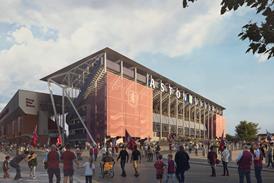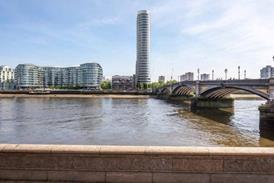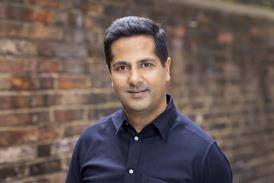Neal Shasore makes a call for deeper reform in how architects are trained and held accountable post-Grenfell

In the wake of the Grenfell Inquiry Phase 2 report, I’ve found myself, like many in our industry, deeply reflecting on its findings. The report makes it painfully clear that the fire was the result of a widespread failure among the profession. While some might debate the extent of the architect’s culpability – Olly Wainwright, for instance, argued in The Guardian that Studio E bears ultimate responsibility – the perception has undeniably stuck. And, in truth, it should. Accountability is the bedrock of professionalism, and we must confront the uncomfortable truth that our profession has been complicit in a systemic failure. As the report reminds us, the profession has known this day of reckoning was coming.
Peter Apps’s Show Me The Bodies: How We Let Grenfell Happen – a harrowing, unflinching account of the disaster – was published three years ago, making clear that the Grenfell tragedy was a product of a web of professional buck-passing. Dame Judith Hackitt’s 2018 review further underscored the same point: Grenfell was a consequence of systemic failure. Yet the question that lingers for us, particularly in architectural education, is this: have we truly learned the lessons of Grenfell?
Looking through the lens of architectural education, I remain sceptical. The issues exposed by Grenfell aren’t just about technical failings; they are about the culture of our profession and the ways in which we educate and train architects. Are we, as a profession, confident that we won’t repeat these mistakes? I’m not. I worry that while higher education courses strive to produce skilled graduates, continuing professional development (CPD) for those in practice is still lacking the depth and critical engagement we urgently need. It feels disconnected from the realities we face, particularly around fire safety and regulatory competence.
This is why we have been pushing so hard, through our Part 4 initiative, for a more robust approach to lifelong learning for built environment professionals. Architecture has this weakly professionalised status, as I’ve said before, and we need to redefine what competence means in today’s complex world. It is imperative that the industry takes seriously its duties as designers, consultants, clients, regulators, and most of all, as people responsible for safety.
Our campaign for more critical and reflective education has culminated in the creation of our fire, health, and life safety short course, Design for Life: Fire Safety, Building Resilience, and the Principal Designer. This course is part of the answer to the failures outlined in the Grenfell Inquiry. It was never our goal for participants to leave with only a basic level of statutory competence. We all know how easily this can lead to the dangerous assumption that specialist knowledge rests with someone else, and that’s precisely the mentality that got us here.
This course isn’t a tick-box exercise. It’s discursive, humane, and holistic. It questions why we have the fire regulations that we do, and it explores why the role of the Principal Designer matters now more than ever. This is critical if we are to build a profession that takes collective ownership of safety. As part of the course, participants engage in weekly design and drawing exercises, not just to learn the technicalities, but to interrogate differing viewpoints, to engage with complexity, and to embrace nuance.
Ultimately, Design for Life aims to build a network of advocates and leaders in the industry who are committed to a new professional landscape – one that puts people before profit and passion before passive compliance. As I’ve said before, the only serious way to memorialise Grenfell is in a progressive way. The weight of responsibility is immense, but it is non-negotiable.
And as Thouria Istephan, a panel member of the Inquiry and a registered health and safety practitioner, stated so powerfully: “Put simply, if you work in the construction industry and you do not feel the weight of responsibility you have for keeping people safe, you are in the wrong job.”
>> Also read: What were Studio E’s failures on the Grenfell Tower refurbishment?
>> Also read: Grenfell’s legacy should be a recommitment to safety and professionalism across our industry
>> Also read: Studio E’s controversial appointment to Grenfell Tower refurbishment exposes flaws in procurement process
Postscript
You can find out more about the Design for Life course here
















2 Readers' comments